Tengo el placer de tener en este “Vis a vis” a José Luis López Palacios, un dibujante que labora en la publicación humorística cubana Palante desde 1976.
Es graduado de la Escuela de Artes Plásticas San Alejandro, de la Escuela Nacional de Arte y Licenciado en Gráfica en la Especialidad de Grabado del Instituto Superior de Arte.
Trabaja casi todos los géneros del humor gráfico. Es realizador de portadas de varias revistas. Sus obras han sido expuestas en gran cantidad de Salones y Exposiciones nacionales e Internacionales donde ha obtenido importantes premios y menciones. Y ha ha participado como miembro del jurado en diferentes e importantes eventos de Humor Gráfico en Cuba.
Mucho antes de hacerme humorista profesional, ya conocía la obra de este destacado caricaturista.
Pero mejor comencemos el “Vis a vis”.
PP: Bueno, José Luis, para los seguidores de Humor Sapiens, ¿puedes presentarte? (Porque quizás mi presentación fue incompleta). ¿Cómo te gustaría que te conocieran, que te recordaran, cuando ya no estemos aquí?
JOSÉ LUIS: Me gustaría que Humor Sapiens, en el Más Allá o en el Más Acá, me recordaran como otro de los “loquitos” que le dio por dibujar caricaturas en este Mundo medio loco en que habitamos.
PP: Pues así será entonces. Y empecemos a conocerte mejor. Por ejemplo, ¿en qué momento decidiste dedicarte al humor?
JOSÉ LUIS: Desde pequeño me interesó mucho dibujar (y pintar, como dice la gente). Recuerdo muy bien cuando un espermatozoide de mi viejo se llegó hasta el óvulo de mi vieja y le preguntó: ¿te interesaría un humorista gráfico?....
PP: Tremendísima memoria, amigo mío. Y dime una cosa, ¿el espermatozoide preguntó también si le interesaría un estilo específico? Si no fue así, te lo pregunto yo: ¿empezaste a dibujar sin estilo? Si tuvieras uno, ¿qué estilo sería? ¿Tuviste alguna influencia de caricaturistas nacionales o extranjeros en ese momento? ¿Cómo ha evolucionado tu trabajo a lo largo del tiempo en términos de forma y contenido?
JOSÉ LUIS: No me limito nunca a un estilo especifico ni preseleccionado, cuando voy a dibujar o a pintar o a realizar una historieta, pienso y busco la mejor manera para lograr el objetivo de plasmar gráficamente la idea que esta rondando en el éter cerca de mi cerebro y mi cabeza. Bastante cabezón que soy por cierto y cabeciduro y empecinado para el trabajo. Y como dijo alguien, dicen que fue Chaplin: “Trabajar es vivir y a mí me encanta vivir. Y mucho mejor, si estamos haciendo algo que nos apasiona y atrapa.
Todos tenemos influencias de algo o de alguien, en mi caso, Francisco Blanco, quien me descubrió en San Alejandro y quien fue mi primer director en Palante, se me apareció un día con un libro rojo del Maestro Quino y me dijo: coge, te lo regalo, estúdialo, mira como el resuelve el dibujo y las situaciones humorísticas gráficamente, esta fue una de mis más importantes clases de humor gráfico en ese momento, año 1976.
Yo no conocía la excepcional obra de Quino, me impresionó mucho el nivel de realización y la obra de este Señor Gran Maestro.
Tampoco puedo negar la influencia que tuve desde chamaco de las historietas y comics norteamericanos, desde pequeño pude ver una gran cantidad de esas revistas y sus personajes y guiones, me refiero a: Mickey Mouse, La pequeña Lulú, Super Raton, Popeye, Las dos urracas, de Paul Terry, El oso Yogui, etc., etc. Y de las dramáticas y de aventuras: Superman, Batman, El príncipe Valiente, El Spirit, El Llanero Solitario, etc.
Ya trabajando en Palante desde 1976, comienzo a familiarizarme con revistas y con los humoristas gráficos que también había visto desde que era un niño: Matojo, de Lillo, Criollitas y otros personajes de Wilson; Ay Vecino!!, de Blanco, Gugulandia de Hernán, el Loquito de Nuez; las excelentes caricaturas personales de Juan David.
Tuve la gran oportunidad y el privilegio de conocer y aprender de muchos buenos talentos de la grafica cubana: Val, Ñico, Pitin, Felo, Virgilio, Juan Padrón (Padroncito).
Fue una gran influencia y un enorme privilegio laborar y aprender de muy cerca con un grupo de redactores estrellas que trabajaban o colaboraban o asesoraban en el periódico: El indio Naborí, Alberto Luberta, Juan Angel Cardi, Mitjans, Évora, Betán y muchos más que se acercaban a la publicación.
En esta etapa de mi labor en Palante, conocí la obra de otros muchos caricaturistas del mundo: recuerdo a Fontanarrosa, el argentino, a los mejicanos Rius, Kemchs, Heras, y a otros muchos de los periódicos y revistas del desaparecido campo socialista de Europa; esto fue mediante las revistas que recibíamos por correo postal: Kokodril, de Moscu, ROHACK, Eulenspieguel de la RDA; Dikobraz de Checoslovakia y otras muchas.
Nunca me interesó modernizar mucho mi estilo o forma, me interesaba más un dibujo con movimiento y acción, que se acoplara más a mi intención de trasmitir práctica y rápidamente la idea o el chiste necesario para publicar semanalmente, esto debido a la frecuencia del periódico, entonces los dibujos para eventos, concursos o expos, los elaboraba más.
PP: Acabas de dar una disertación sobre el humorista José Luis y sobre cómo debe formarse alguien que comienza en esta modalidad. Me place saber que nos formamos con las historietas norteamericanas, Hernán Henríquez, Juan Padrón, Cardi y todos esos que mencionas. Conocí y conozco a muchos, incluso a varios los he entrevistado para Humor Sapiens. Un aparte para Betán, Miriam, que fueron grandes amigos en lo personal. Incluso publiqué varios libros con Betán aquí en Chile. Y otro aparte especial para mi querida amiga Évora. Bueno, seguimos… ¿qué modo prefieres: dibujar con humor sin palabras o dibujar con textos? ¿Por qué?
JOSÉ LUIS: Sería una gran limitante escoger entre el dibujo con texto o sin palabras, como decimos también en el argot. A mí me importa un comino este dilema, hay muy buenos chistes en dibujos hechos con texto y muy buenos y geniales dibujos sin textos. Pongo de ejemplo al Maestro Chago, en su onda muy plástica, Metafísica y muy personal, no dejo de poner tipografías y globos con textos que calzaban de manera genial sus obras.
Eso si, me enseñaron los redactores y otros dibujantes a poner solamente las palabras necesarias en cada globo. Onomatopeya, o cartel, ni más ni menos, porque el dibujo está también a veces explicando visualmente. En esos casos a veces sobra el globo o texto.
Ahora bien, la ventaja que tiene el humor sin palabras es el alcance universal, que se entiende en todos los idiomas o dialectos, como decimos los caricaturistas: humor internacional, lo entienden los grupos del Amazonas y los Esquimales en Groenlandia también.
PP: Se comprende que la caricatura editorialista es muy difícil hacerla sin texto. Pero la que se hace para concursos, ahí sí debe ser universal. Y hablando de ese tema, Entre los muchos premios que has recibido, ¿cuál te conmovió más o te impactó más?
JOSÉ LUIS: Para mí, premios importantes fueron, por ejemplo: los cinco premios obtenidos con una misma obra, esto sucedió con la caricatura titulada “La Divina Cuenta”, es una apropiación de la Cena Divina, donde el dependiente gastronómico le está cobrando a Jesús un montón de dólares por la cena. Fue en la XI Bienal Internacional de Humorismo Gráfico en San Antonio de los Baños, Artemisa, Cuba.
Es una acuarela sobre cartulina. Fue Primer Premio de humorismo, Premio del Museo del Humor, Premio de Palante, Premio del Público y de Artex, provincia Habana cuando aquello.
Otro muy interesante fue el Primer Premio que obtuve en el extranjero, que curiosamente fue en Israel, en un concurso sobre Seguridad del tránsito, convocado por el Ministerio de Educación y la Secretaría de Cultura de Haifa. Me enviaron una carta muy respetuosa y afectiva de cómo a pesar de las diferencias, la cultura era capaz de reunir a los pueblos. Yo había obtenido diferentes y variados premios y menciones en el extranjero, pero este de Israel fue el Primer Premio internacional con portada de catálogo y todo. Cuando eso se enviaba el dibujo original, no poseo la copia, anda por el Medio Oriente.
PP: Felicidades por todos esos premios. Y como mencionaste Haifa, te comento que es una de las ciudades más bellas que he conocido. Me recordó a mi Matanzas. Oye, ¿cuál es el humor que más te gusta hacer? Te doy variantes: a-El que simplemente te divierte | b-El que te divierte y te hace pensar | c-El que te hace pensar, pero sólo es crítico, satírico | d-El burlesco, irrespetuoso, ofensivo.
¿Y por qué no escogiste los otros? (si es que dejaste alguno sin escoger, claro).
JOSÉ LUIS: Me parece que el humor que no debemos hacer es el irrespetuoso, ni el que se burla de defectos físicos con crueldad. No tenemos ningún derecho a hacer eso, además eso conlleva resultados mediocres, facilistas de muy mal gusto y muy poco aquilatados.
Se supone que hagamos un humor sano, educativo, inteligente, reflexivo, que alegre, que fustigue el látigo con cascabeles en la punta y contribuya al bienestar y al mejoramiento humano lo mejor posible.
Eso sí, el humorista es también irreverente, no admite complicidad con lo mal hecho, como el atropello, el abuso, las malas conductas, las guerras, la explotación, la esclavitud, etc.
PP: Estamos de acuerdo. Bueno, reflexionemos un poco ahora. ¿El humorista nace o se hace?
JOSÉ LUIS: Eso es un misterio. Ya el humorista, sea gráfico o escritor, debe traer por ahí escondido un sello de fábrica y con el material genético incluido, ya viene al mundo con esa necesidad de buscarle la cosquilla o la quinta pata a las situaciones más adversas o contradictorias. Entonces las observa, las analiza rápidamente y como por arte de magia de ahí saca los chistes y las jodederas que escribe o dibuja.
Ya si hay en le persona el interés por hacer humorismo y tiene la chispa para esta difícil tarea de hacer reír, pensar, sonreír o reflexionar, entonces solo queda guiar sus pasos y pulir el camino para convertirlo en profesional de este difícil, pero generoso empeño.
PP: Y para ti, ¿es más fácil hacer llorar que hacer reír?
JOSÉ LUIS: Las dos cosas son difíciles. Yo por lo menos, a hacer llorar no me dedicaría nunca, preferiría dedicarme a trabajar para que la gente se orinara o se muriera, pero de la risa todo el tiempo, ja, ja, ja.
PP: Y una pregunta que está de moda: ¿cuáles son los límites del humor, si los hubiera? Y a propósito, ¿fuiste censurado alguna vez? ¿Te autocensuras mucho, poco o nunca?
JOSÉ LUIS: Trato de no autocensurarme, le dejo esa tarea a los funcionarios, editores y directores. Si me limito al crear, exploto, me desintegro, Solo me limito a ser respetuoso con el público a quien va dirigido mi trabajo gráfico. Respeto grandemente mi oficio y a mi Patria. Las críticas las hago mordaces, pero sin morder. Como decía Martí, desvanecer con mano suave el velo de lo mal hecho. Casi siempre se comunica mucho mejor de esta manera, y se trasmiten mejor los mensajes.
Durante 40 años de labor y realizando miles de caricaturas de distintas temáticas y cuestiones, me han censurado algunos que otros chistes y me han tratado de hacer arreglos en palabras y situaciones, pero el que esté libre de censuras, que lance la primera piedra, ja, ja.
Claro, yo ajusto bien la puntería y trato sin mucha tragedia de no darle tregua a los censores, no les doy mucha oportunidad, como en el béisbol, les cierro bastante el cuadro, dejándoles pocas posibilidades de cambiarme, arreglarme o eliminarme el trabajo.
Casi siempre la censura se manifiesta por situaciones coyunturales, razones de política editorial y a veces caprichos momentáneos, el profesional debe saber caminar con paso firme por esa cuerda floja.
En este sentido, comprendo y hago los ajustes necesarios y como en el ajedrez, realizo y analizo rápidamente las variantes necesarias antes de entregar mis trabajos. De todas maneras, el humor es infinito también. Tiene millones de variantes.
PP: ¿Cómo ves el presente y el futuro del humor gráfico? Tanto en Cuba como en el mundo.
JOSÉ LUIS: Para mí, el humor también tuvo que estar en las cosquillas, digo, en las costillas de Adán, viene incluido en la creación. Dios no podía pasar por alto este detalle tan importante y muy sabiamente lo incluyó en su repertorio creativo superior, y aunque no está en los Diez Mandamientos, deberíamos ponerlo: “Reirás hasta que te canses”. Quiero decir que, con tremenda variedad de estilos y maneras de representarse, el humorismo perdurará.
PP: Yo también soy optimista, pero para el futuro, porque en el presente soy pesimista. Cada día hay menos espacios para publicar e Internet, que es la mejor opción, aún no resuelve el problema de la remuneración. Bueno, pero para mejorar el ánimo en este “Vis a vis”, ¿podrías contarnos alguna anécdota cómica, curiosa o ingeniosa, que hayas vivido durante tu trayectoria en el humor?
JOSÉ LUIS: Anécdotas tengo muchas. El día que llegamos a la misma hora, a las diez de la mañana, a la redacción del periódico Palante, René de la Nuez y yo, con dos dibujos para la portada idénticos, con el mismo chiste y los personajes en la misma situación y la misma idea. Lo asombroso del caso para todos fue que Nuez y yo vivimos a diez kilómetros de distancia, no nos veíamos hacia días y mucho menos habíamos hablado por teléfono, cuando aquello no existían ni los móviles. Los dos abrimos los ojos y se nos cayeron las quijadas, y a los que estaban presentes también, ja, ja, ja. ¿Fue un plagio o copia por trasmisión telepática? Los genios coinciden (modestia aparte). Expedientes X ¿?
PP: Increíble, eso. Una vez más se demuestra que muchas de las acusaciones de plagio son coincidencias. Por eso hay que estudiar mucho acusar sin haber analizado bien todo. No porque me haya pasado a mí, pero sí a amigos míos. Y, para ir cerrando, ¿quieres que te haga una pregunta que no te hice? Si es así, ¿podrías responderla ahora?
JOSÉ LUIS: ¿Pregunta que no me hiciste ¿?... ¿Cómo haces el humor erótico?
Y yo te respondería: Ya a mi edad me parece que pudiera hacerlo como el primer día, pero con “Viagra”, ja, ja, ja.
PP: ¿Qué me puedes aconsejar a mí, como humorista?
JOSÉ LUIS: Te aconsejaría que si quieres, deja alguna que otra vez hacer el Amor, pero no te atrevas jamás a dejar de hacer el Humor, ¿Ok?
PP: Te lo prometo. Y por último: ¿le puedes dirigir unas palabras a los lectores de Humor Sapiens?
JOSÉ LUIS: A los lectores de Humor Sapiens les recomiendo, que si de verdad quieren humor hecho inteligente y sabiamente, no abandonen la buena y saludable costumbre de leer esta revista, ja, ja, ja. Esto parece un comercial, ja, ja, ja. Ponle una fanfarria con unas trompetas de fondo musical.
Le pregunte a la Inteligencia Artificial, ¿cuál era la revista humorística más inteligente del planeta Tierra? Y me respondió: Sigan Humor Sapiens… Sigan Humor Sapiens… Sigan Humor Sapiens… Sigan Humor Sapiens… Sigan Humor Sapiens… y así sucesivamente. Para mí que esto se lo programó el amigo Pepe Pelayo, Ja, ja, ja.
PP: Sí, seguro fui yo, porque quedó como disco rayado, ja, ja.
Bueno, José Luis, te doy miles de gracias por tu tiempo y tu atención, para hacer este “Vis a vis”. La pasé muy bien. Te deseo mucha salud y que sigan tus éxitos. Un abrazo.
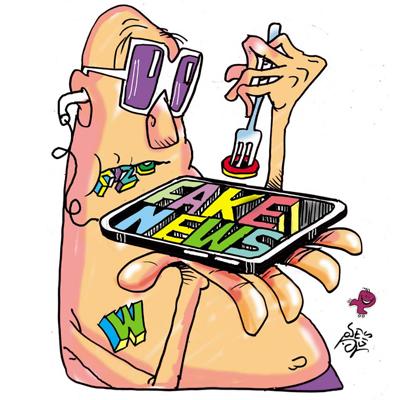
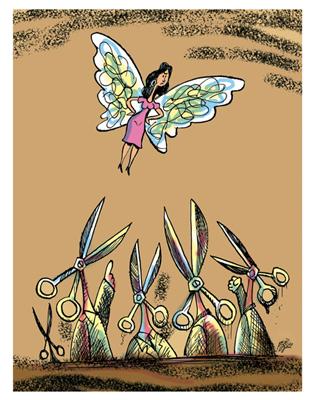
Mujer
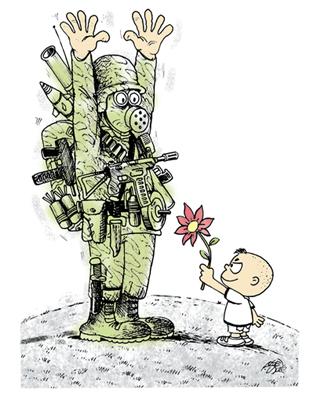
Paz
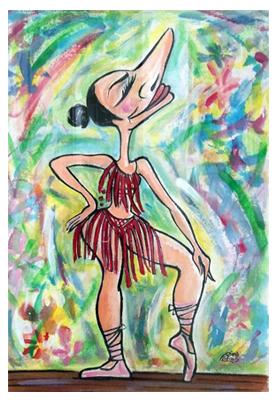
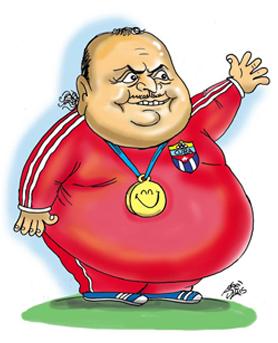
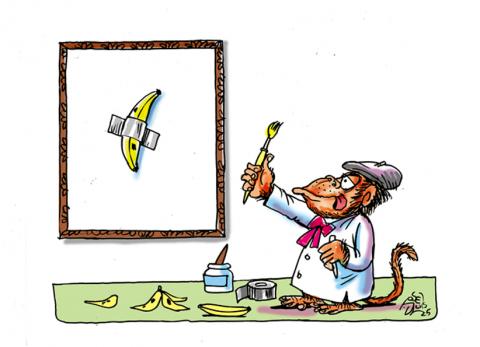
Naturaleza muerta
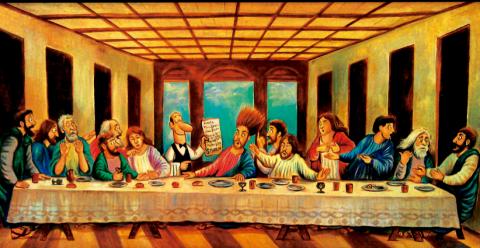
La divina cena
Interview with José Luis López
by Pepe Pelayo
I have the pleasure of having José Luis López Palacios in this “Vis a Vis,” a cartoonist who has been working for the Cuban humor publication Palante since 1976.
He graduated from the San Alejandro School of Visual Arts, the National School of Art, and holds a degree in Graphic Arts specializing in Engraving from the Higher Institute of Art.
He works in almost all genres of graphic humor. He has designed covers for several magazines. His works have been exhibited in numerous national and international Salons and Exhibitions, where he has won important awards and mentions. He has also participated as a jury member in various significant Graphic Humor events in Cuba.
Long before I became a professional humorist, I was already familiar with the work of this outstanding cartoonist.
But let’s get started with our “Vis a Vis.”
PP: Well, José Luis, for the followers of Humor Sapiens, could you introduce yourself? (Because maybe my introduction was incomplete.) How would you like to be known and remembered when we are no longer here?
JOSÉ LUIS: I’d like Humor Sapiens, in the Hereafter or the Here and Now, to remember me as just another of those “crazy ones” who decided to draw cartoons in this somewhat insane world we live in.
PP: Then so it shall be. Let’s get to know you better. For example, when did you decide to dedicate yourself to humor?
JOSÉ LUIS: Ever since I was a child, I was very interested in drawing (and painting, as people say). I remember very well when one of my father’s sperm reached my mother’s egg and asked: “Would you be interested in a graphic humorist?”
PP: Incredible memory, my friend. Tell me something—did the sperm also ask if she was interested in a specific style? If not, I’ll ask you now: Did you start drawing without a particular style? If you had one, what would it be? Were you influenced by national or foreign cartoonists at the time? How has your work evolved over time in terms of form and content?
JOSÉ LUIS: I never limit myself to a specific or pre-selected style. When I draw, paint, or create a comic strip, I think and search for the best way to graphically capture the idea that is hovering in the ether near my brain and my head. And by the way, I have quite a big head—stubborn and persistent when it comes to work. And as someone once said (they say it was Chaplin): “To work is to live, and I love living. Even better when we’re doing something that fascinates and captivates us.”
We all have influences from something or someone. In my case, Francisco Blanco, who discovered me at San Alejandro and was my first director at Palante, once came to me with a red book by Master Quino and said: “Take this, it’s a gift—study it, look at how he resolves the drawing and humor situations graphically.” That was one of my most important graphic humor lessons at that time, in 1976.
I wasn’t familiar with Quino’s exceptional work, and I was very impressed by the level of execution and the greatness of this Grand Master’s work.
I also can’t deny the influence I had since childhood from American comic strips and comics. From a young age, I had access to many of these magazines, their characters, and stories—Mickey Mouse, Little Lulu, Mighty Mouse, Popeye, Paul Terry’s Heckle and Jeckle, Yogi Bear, etc. And from adventure and dramatic comics: Superman, Batman, Prince Valiant, The Spirit, The Lone Ranger, and many others.
Once I started working at Palante in 1976, I became more familiar with magazines and graphic humorists that I had already seen as a child: Matojo, by Lillo; Criollitas and other characters by Wilson; Ay Vecino!! by Blanco; Gugulandia by Hernán; El Loquito by Nuez; and the excellent personal caricatures of Juan David.
I had the great opportunity and privilege to learn from many talented Cuban graphic artists—Val, Ñico, Pitin, Felo, Virgilio, Juan Padrón (Padroncito).
It was also an incredible experience to work and learn closely with a group of top-tier writers who worked, collaborated, or advised at the newspaper: El Indio Naborí, Alberto Luberta, Juan Ángel Cardi, Mitjans, Évora, Betán, and many others who contributed to the publication.
During my time at Palante, I also discovered the work of many international cartoonists. I remember Fontanarrosa from Argentina, Mexicans like Rius, Kemchs, and Heras, and many artists from newspapers and magazines from the former Eastern Bloc. We received these publications by mail—Krokodil from Moscow, ROHÁČ from Slovakia, Eulenspiegel from East Germany, Dikobraz from Czechoslovakia, and many more.
I was never too interested in modernizing my style; I focused more on dynamic and expressive drawings that could effectively convey the joke or idea, especially given the weekly publication schedule. However, for competitions and exhibitions, I would dedicate more effort to elaborating my pieces.
PP: You just gave a masterclass on yourself as a humorist and how someone should train in this field. I’m pleased to know that we were shaped by American comics, Hernán Henríquez, Juan Padrón, Cardi, and all those you mentioned. I knew and still know many of them—I’ve even interviewed several for Humor Sapiens. A special mention for Betán and Miriam, who were great personal friends. I even published several books with Betán here in Chile. And another special mention to my dear friend Évora.
Well, let’s continue… Do you prefer to draw humor without words or with text? Why?
JOSÉ LUIS: Choosing between drawing with or without text would be very limiting. Honestly, I couldn’t care less about that dilemma. There are excellent jokes in both categories.
For example, Master Chago, with his highly artistic and metaphysical approach, didn’t shy away from using typography and speech bubbles to enhance his works.
That said, I was taught by editors and other cartoonists to use only the necessary words in a speech bubble, onomatopoeia, or caption—no more, no less—because sometimes the drawing alone explains the joke visually, making the text unnecessary.
However, the advantage of wordless humor is its universal reach. It can be understood in all languages and dialects. As we cartoonists say, it’s international humor—people from the Amazon and the Eskimos in Greenland can understand it alike.
PP: Editorial cartoons are very hard to make without text. But for competitions, they do need to be universal. Speaking of which, among all the awards you’ve received, which one moved or impacted you the most?
JOSÉ LUIS: Some of the most important awards for me include the five prizes I won with a single piece. This happened with the cartoon La Divina Cuenta (The Divine Bill), a take on The Last Supper, where a waiter is charging Jesus an enormous bill in dollars. This was at the 11th International Graphic Humor Biennial in San Antonio de los Baños, Artemisa, Cuba.
It was a watercolor on cardboard. It won First Prize in Humor, the Museum of Humor Award, the Palante Award, the Public’s Award, and the Artex Prize from the Havana province.
Another very significant one was my first international prize, which, interestingly, was in Israel. It was in a traffic safety contest organized by the Ministry of Education and the Haifa Department of Culture. They sent me a very respectful and warm letter about how, despite our differences, culture could bring people together. I had won different awards and mentions abroad before, but this was my first First Prize internationally, even making it to the cover of the catalog. At that time, we sent the original drawings, so I don’t have a copy—it’s somewhere in the Middle East.
PP: Congratulations on all those awards. And since you mentioned Haifa, I must say it is one of the most beautiful cities I have ever visited. By the way, what kind of humor do you like to create the most? Here are some options:
a) The one that simply amuses you b) The one that amuses you and makes you think c) The one that makes you think, but is only critical or satirical d) The mocking, disrespectful, or offensive one.
Why didn’t you choose the others? (If you left any out, of course.)
JOSÉ LUIS: I believe the kind of humor we should avoid is the disrespectful kind or the one that cruelly mocks physical defects. We have no right to do that; besides, it results in mediocre, simplistic jokes of very poor taste and little value.
We are supposed to create wholesome, educational, intelligent, and thought-provoking humor that brings joy, criticizes with a sting but with a jingle at the end, and contributes as much as possible to human well-being and improvement.
That said, a humorist must also be irreverent and not tolerate wrongdoing, such as abuse, misconduct, war, exploitation, slavery, etc.
PP: I completely agree. Now, let’s reflect a bit. Is a humorist born or made?
JOSÉ LUIS: That is a mystery. A humorist, whether a cartoonist or a writer, must be born with some sort of built-in trademark and genetic material, coming into the world with an innate need to find the absurdity or irony in even the most adverse or contradictory situations. They observe, analyze quickly, and as if by magic, create jokes and sketches from them.
Now, if a person is interested in humor and has the wit to tackle this difficult task of making people laugh, think, smile, or reflect, then all that remains is to guide them and refine their skills so they can become a professional in this tough but rewarding craft.
PP: Do you think it’s easier to make people cry than to make them laugh?
JOSÉ LUIS: Both are difficult. Personally, I would never dedicate myself to making people cry. I would rather work to make people laugh so hard they pee themselves or die from laughter, ha ha ha.
PP: A trendy question: Are there limits to humor? And by the way, have you ever been censored? Do you self-censor a lot, a little, or never?
JOSÉ LUIS: I try not to self-censor; I leave that job to officials, editors, and directors. If I limit myself while creating, I explode—I disintegrate. I only make sure to be respectful of my audience. I greatly respect my craft and my homeland. My criticisms are sharp but not biting. As Martí said, one should lift the veil of wrongdoing with a gentle touch. This approach often communicates the message better.
In my 40-year career, producing thousands of cartoons on various topics, I’ve had a few censored, and some have been altered in wording or context. But let anyone who has never been censored cast the first stone, ha ha.
Of course, I aim carefully and try not to give censors much leeway. Like in baseball, I close in the field so they have little chance to change, alter, or discard my work.
Censorship usually arises due to situational circumstances, editorial policies, or occasional whims. A professional must know how to navigate this tightrope skillfully. I understand this and make the necessary adjustments. Like in chess, I quickly analyze and execute strategic moves before submitting my work. Humor, after all, is infinite—it has endless possibilities.
PP: How do you see the present and future of graphic humor, both in Cuba and worldwide?
JOSÉ LUIS: For me, humor must have been in Adam’s ribs—or rather, his ticklish spots! It was part of creation. God couldn’t have overlooked such an essential detail, and wisely included it in his superior creative repertoire. And even though it’s not in the Ten Commandments, we should add one: "Thou shalt laugh until you are exhausted."
Humor will endure in all its diverse styles and forms of expression.
PP: I’m optimistic about its future but pessimistic about the present. There are fewer publishing spaces every day, and while the internet is the best option, it still hasn’t solved the problem of fair remuneration. But to lighten the mood in this "vis-à-vis," could you share a funny, curious, or witty anecdote from your career in humor?
JOSÉ LUIS: I have many anecdotes. One morning, at exactly ten o’clock, René de la Nuez and I arrived at the editorial office of Palante with identical cover drawings. The same joke, the characters in the exact same situation, and the same idea. Everyone was shocked because we lived ten kilometers apart, hadn’t seen each other in days, and hadn’t spoken on the phone—back then, there were no cell phones. Our jaws dropped, and so did everyone else’s, ha ha ha. Was it plagiarism or telepathic transmission? Great minds think alike (modesty aside). X-Files material, perhaps?
PP: Incredible! That proves that many accusations of plagiarism are just coincidences. That’s why people should think twice before making accusations without thorough analysis. Not that it happened to me, but it has to some of my friends. And to wrap things up—do you want me to ask you a question I didn’t ask? If so, could you answer it now?
JOSÉ LUIS: A question you didn’t ask? Hmm… "How do you create erotic humor?"
And I would answer: At my age, I think I could still do it like the first time—but with Viagra, ha ha ha.
PP: What advice would you give me as a humorist?
JOSÉ LUIS: I’d advise you that, if you must, you can skip making love now and then, but never dare to stop making humor, okay?
PP: I promise. And finally, could you say a few words to the readers of Humor Sapiens?
JOSÉ LUIS: To the readers of Humor Sapiens, I recommend that if they truly want intelligent and well-crafted humor, they should never abandon the healthy habit of reading this magazine, ha ha ha. This sounds like a commercial, ha ha. Add a fanfare with trumpets in the background.
I asked Artificial Intelligence which is the most intelligent humor magazine on Earth, and it replied: Humor Sapiens… Humor Sapiens… Humor Sapiens… Humor Sapiens… and so on. I suspect my friend Pepe Pelayo programmed it that way, ha ha ha.
PP: Ha ha ha! Yeah, definitely me—it sounds like a broken record! Ha ha.
Well, José Luis, thank you so much for your time and attention in this vis-à-vis. I had a great time. I wish you good health and continued success. A big hug.
(This text has been translated into English by Google Translate)

